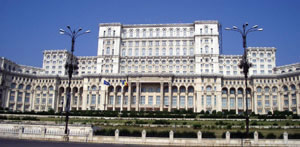Bucharest lacks a comprehensive vision of its future urban profile.
Private initiative is dictating the shape of the city as new developments and large office buildings emerge with little public debate in an unregulated building market.
This new environment is following free market principles to a fanatical degree. But the long term implications could affect both the quality of life of its citizens and the value of property.
Some stakeholders in the city are concerned that this is leading to a spontaneous development phase that is out of control – a kind of aesthetic anarchy.
There is also no strong local law on who can build what and where. Most private developers are free to do what they want. The level of property in the public sphere is very low, which means the city authorities have little control on what happens in their own backyard.
This is the total reverse of the situation 20 years ago – where the city was centrally planned.
But the capital is going too far in the opposite direction.
Ironically, many of the constructions also follow the same principals of Communist development – they are quick to build, easy to construct and maximise the limited amount of space available.
But by being out of touch with the people who have to live and travel through the area or go to work nearby, they risk making the same mistakes of the past.
More public consultation and greater responsibility from local authorities and developers is needed to create a consistent, harmonious and inspiring urban appearance.
There are exceptions.
Some architects look to revive the spirit of the creative heyday of the 1930s by combining the style of small scale apartment blocks, high ceilings and horizontal windows with modern conveniences like underground parking and air conditioning. These designers are also finding that their work, particularly in private villas, is commanding the highest prices. Good taste and the demands of the market do sometimes coalesce.
In this issue we quiz Mayor Videanu on his outlook for an ideal capital and also speak to local and international architects and experts on their views on the state of the city, including Meinhard von Gerkan, the winner of the Bucharest 2000 project to redevelop the capital, who is angry and frustrated that none of his hard work for the city came to any realisation, although he still feels the capital has potential.
There is no firm law on the aesthetic criteria of a building before it is commissioned in Romania. But many of the developments in Bucharest only take advantage of the downsides of deregulation – the fact they can make the most money possible out of a plot of land in the shortest period of time - rather than exploiting its benefits. Property owners could commission extraordinary and bizarre examples of modern architecture – the kind that conservative city authorities, which suffer from an over-abundance of consultation, tend to reject because their designs do not translate into their architectural vocabulary.
One such is Romania’s Museum of Contemporary Arts – a glass box attached to the rear of the Parliament Building. Not a feature that could have so easily be added to the side of Big Ben or the Oval Office, this is bizarre, nonsensical to most Romanians and unopposed in development.
Michael Bird

